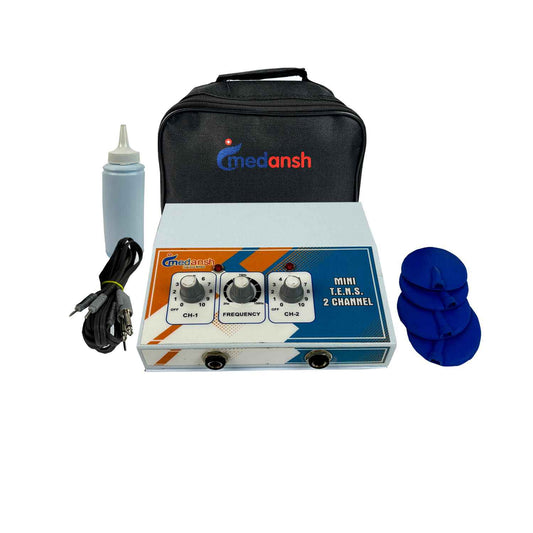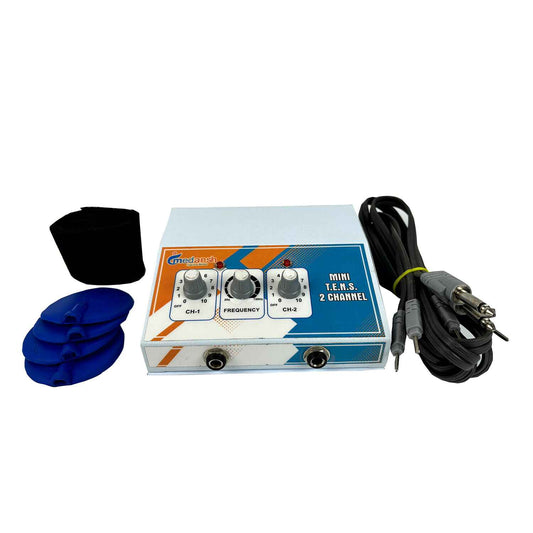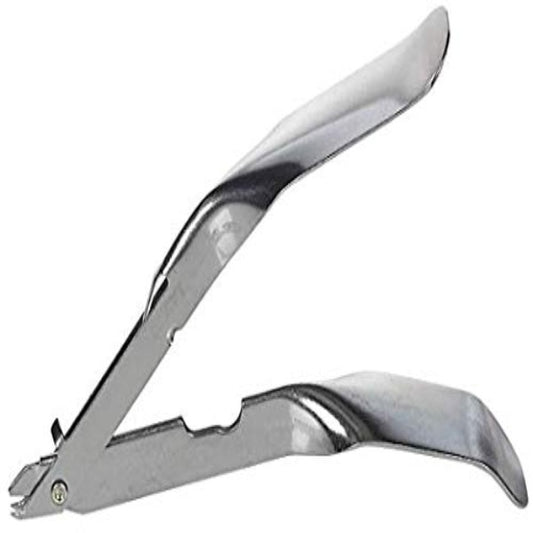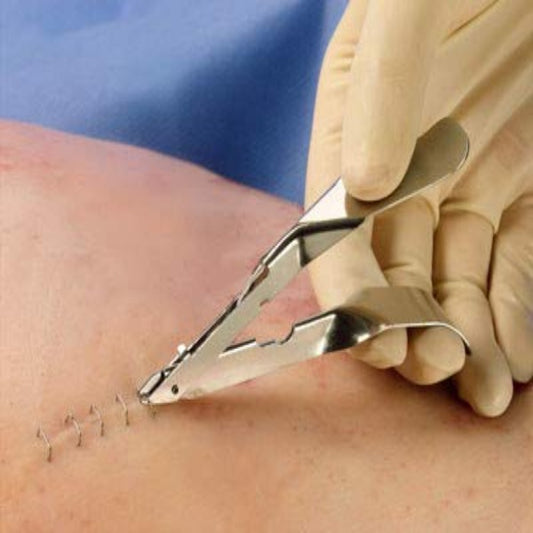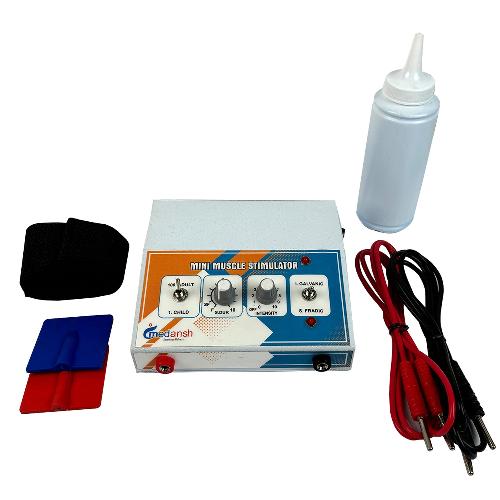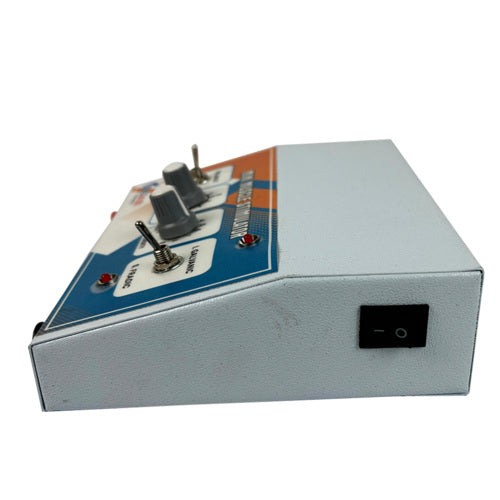-
Cataract Eye Model – Educational Tool for Patient Demonstration & Training This Cataract Eye Model is an invaluable visual aid designed to help medical professionals, students, and educators explain the anatomy of the eye and the effects of cataract formation. With removable components such...
- Rs. 2,499Inclusive of all taxes
Rs. 3,000- Rs. 2,499
- Unit price
- per
Save Rs. 501Inclusive of all taxes
-
Key Features Uterus The cervix is divided into a supra-vaginal portion and a vaginal portion. The ligaments of the uterus are eight in number The fallopian tubes The Ovaries Frequently Asked Questions : Q: WHAT IS THE MAGNIFICATION OF THIS UTERUS MODEL? A: The...
- Rs. 3,199Inclusive of all taxes
Rs. 4,999- Rs. 3,199
- Unit price
- per
Save Rs. 1,800Inclusive of all taxes
-
Dimension: 36x12 Inch Riding on unfathomable volumes of industrial expertise, we are offering an excellent range of Digestive System Model. This digestive system model is designed with latest techniques & high grade material. Our honored customers can obtain the offered digestive system model in varied...
- Rs. 4,499Inclusive of all taxes
Rs. 6,000- Rs. 4,499
- Unit price
- per
Save Rs. 1,501Inclusive of all taxes
-
Enhance patient education with our Dental Care Model. Anatomically accurate, it's perfect for explaining procedures and promoting oral health.Specifications:Lifelike dental anatomyRemovable teeth for detailed demonstrationDurable, high-quality materialsClear labeling for easy identificationIdeal for dental clinics and educational settings Frequently Asked Questions Q: WHAT IS THE...
- Rs. 1,349Inclusive of all taxes
Rs. 2,000- Rs. 1,349
- Unit price
- per
Save Rs. 651Inclusive of all taxes
-
Shown in accurate detail,this pelvis model can be manipulated to demonstrate how the pelvis moves to accommodate delivery. Flexible anatomy allows exaggerated movements for presenting to a group. Three seprate bone segments are joined together with flexible cord,helping viewers visualize how the pelvic bones...
- Rs. 2,499Inclusive of all taxes
Rs. 3,500- Rs. 2,499
- Unit price
- per
Save Rs. 1,001Inclusive of all taxes
-
Key Product Features With the help of this artery model doctors can explain changes in the blood vessels due to arteriosclerosis. A horizontally dissected artery fork is depicted with arteriosclerotic changes in four different stages, from slightly sediment to a completely clogged blood vessel....
- Rs. 1,399Inclusive of all taxes
Rs. 2,200- Rs. 1,399
- Unit price
- per
Save Rs. 801Inclusive of all taxes
-
Male Urogenital Model – Deluxe Quality | Life-Size Anatomical Display for Medical Education Product Overview:This high-quality life-size Male Urogenital Model provides a detailed anatomical representation of the male reproductive and urinary systems. Perfect for medical colleges, nursing schools, hospitals, and clinics, it is an...
- Rs. 3,449Inclusive of all taxes
Rs. 5,000- Rs. 3,449
- Unit price
- per
Save Rs. 1,551Inclusive of all taxes
-
Key Features Made of High Quality Unbreakable PVC Plastic Anatomically Accurate Shows the structure of uterus and ovaries and also shows some common pathology Perfect for display, demonstration and patient-education Comes with a stand Country Of Origin : India Manufacturer/Importer/Marketed By : Meddey Technologies Pvt Ltd.C-75,...
- Rs. 2,999Inclusive of all taxes
Rs. 4,999- Rs. 2,999
- Unit price
- per
Save Rs. 2,000Inclusive of all taxes
-
Material : PVC color : Natural Usage : Medical This model helps the students to understand the external features and internal structures of the heart, and its relation with the large blood vessels. Thus a clearer conception of the routes of the systemic and pulmonary circulation can...
- Rs. 4,499Inclusive of all taxes
Rs. 6,400- Rs. 4,499
- Unit price
- per
Save Rs. 1,901Inclusive of all taxes
-
23-Part Human Torso Model – Anatomical Study Tool 🔹 Realistic | Educational | Multi-Part Dissection (Prepaid or Partial COD Options available. Call or WhatsApp: +91 8586-012345) This life-sized anatomical human torso model is designed for detailed anatomical study, featuring 23 removable parts for in-depth...
- Rs. 7,499Inclusive of all taxes
Rs. 10,500- Rs. 7,499
- Unit price
- per
Save Rs. 3,001Inclusive of all taxes
-
Key Features: Enlarged deluxe human kidney model depicts a normal kidney while the other side shows diseased kidney with different pathologies and accurate anatomy The normal side of the kidney shows the anatomy of a healthy kidney. Whereas, the other diseased part of the...
- Rs. 2,299Inclusive of all taxes
Rs. 3,500- Rs. 2,299
- Unit price
- per
Save Rs. 1,201Inclusive of all taxes
-
Product Key Features This natural size model reproduces the pancreas, the spleen, and the duodenum. The pancreas is open to show the entire pancreatic duct. The duodenum is partially dissected to expose its nice structure. Specifications:Anatomical Precision: Lifelike representation of the spleen, pancreas, and duodenum.Educational Tool: Valuable for medical students and professionals.High-Quality...
- Rs. 2,799Inclusive of all taxes
Rs. 4,500- Rs. 2,799
- Unit price
- per
Save Rs. 1,701Inclusive of all taxes
-
To meet the requirements of the clients, we are offering a wide myriad of Magnified Human Larynx Model. This is a functional model that demonstrates movements of the epiglottis and cartilages in the voice box. Specification: Material : PVC Color : Natural Usage...
- Rs. 2,499Inclusive of all taxes
Rs. 3,000- Rs. 2,499
- Unit price
- per
Save Rs. 501Inclusive of all taxes
-
This median section of the human pregnant female pelvis model shows normal position of child before birth. Removable fetus. Made with high quality PVC plastic. Specifications:Realistic Anatomy: Depicts pregnant female pelvis in detail.Educational Tool: Ideal for medical students and childbirth education.Size: 38 × 25...
- Rs. 7,999Inclusive of all taxes
Rs. 11,000- Rs. 7,999
- Unit price
- per
Save Rs. 3,001Inclusive of all taxes
-
Key Features This model of female urogenital system serves a teaching model for teachers to teach the female urogenital system. The model shows the kidney, ureters, urinary bladder, uterus, accessories of uterus, vagina, ovary membrane, ligaments, uterus ligaments and its artery etc. Made with...
- Rs. 3,449Inclusive of all taxes
Rs. 4,999- Rs. 3,449
- Unit price
- per
Save Rs. 1,550Inclusive of all taxes
-
Enhance your understanding of colon pathologies with our Colon Pathological Model, designed for medical education and professional use. Specifications:Realistic Representation: Detailed model depicting various colon pathologies.High-Quality: Constructed from durable materials for long-term use.Educational Tool: Ideal for medical students, practitioners, and educators.Visual Aid: Enhance learning...
- Rs. 3,299Inclusive of all taxes
Rs. 4,340- Rs. 3,299
- Unit price
- per
Save Rs. 1,041Inclusive of all taxes
-
Product description Type : Anatomical Model Color : Natural Material : PVC Product Details:- The realistic representation of common liver diseases illustrates the necessity for healthy living by demonstrating the effects of an unhealthy lifestyle on the liver. Full-Size Model Shows Conditions Such as Septal and Nodular...
- Rs. 3,100Inclusive of all taxes
Rs. 4,500- Rs. 3,100
- Unit price
- per
Save Rs. 1,400Inclusive of all taxes
-
Product description Size: 33 x 23 x 5 cm Material: PVC Usage: Medical Training This elaborate model shows the structure of the brain, spinal cord, nasal cavity and larynx. Country of Origin : India Manufacturer/Importer/Marketed By : Meddey Technologies Pvt Ltd.C-75, First Floor DDA Sheds,Industrial Area ,...
- Rs. 2,249Inclusive of all taxes
Rs. 3,200- Rs. 2,249
- Unit price
- per
Save Rs. 951Inclusive of all taxes
-
Product description Material: PVC Usage: Medical Training Full size muscled cervical vertebrae model features brain stem, occipital bone, atlas and axis through C7, with herniated disc, T1 and T3. This model has a soft cerebellum and full nerve with right side brachial plexus. Muscles...
- Rs. 2,999Inclusive of all taxes
Rs. 4,400- Rs. 2,999
- Unit price
- per
Save Rs. 1,401Inclusive of all taxes
-
Product description Material: PVC Size: Adult Life Size Usage: Medical Training Consisting of,occipital plate the 7 cervical vertebrae with intervertebral discs,cervical nerves,vertebral arteries and spinal cord. The cervical spinal column on flexible stand. Country of Origin : India Manufacturer/Importer/Marketed By : Meddey Technologies Pvt Ltd.C-75, First Floor...
- Rs. 1,799Inclusive of all taxes
Rs. 2,600- Rs. 1,799
- Unit price
- per
Save Rs. 801Inclusive of all taxes
Recently Viewed Products
Medansh
Example product title
- Rs. 20Inclusive of all taxes
- Rs. 20
- Unit price
- per
Inclusive of all taxes
Medansh
Example product title
- Rs. 20Inclusive of all taxes
- Rs. 20
- Unit price
- per
Inclusive of all taxes
Medansh
Example product title
- Rs. 20Inclusive of all taxes
- Rs. 20
- Unit price
- per
Inclusive of all taxes
Medansh
Example product title
- Rs. 20Inclusive of all taxes
- Rs. 20
- Unit price
- per
Inclusive of all taxes
Medansh
Example product title
- Rs. 20Inclusive of all taxes
- Rs. 20
- Unit price
- per
Inclusive of all taxes
Medansh
Example product title
- Rs. 20Inclusive of all taxes
- Rs. 20
- Unit price
- per
Inclusive of all taxes
Medansh
Example product title
- Rs. 20Inclusive of all taxes
- Rs. 20
- Unit price
- per
Inclusive of all taxes
Medansh
Example product title
- Rs. 20Inclusive of all taxes
- Rs. 20
- Unit price
- per
Inclusive of all taxes
Medansh
Example product title
- Rs. 20Inclusive of all taxes
- Rs. 20
- Unit price
- per
Inclusive of all taxes
Medansh
Example product title
- Rs. 20Inclusive of all taxes
- Rs. 20
- Unit price
- per
Inclusive of all taxes
- Choosing a selection results in a full page refresh.

